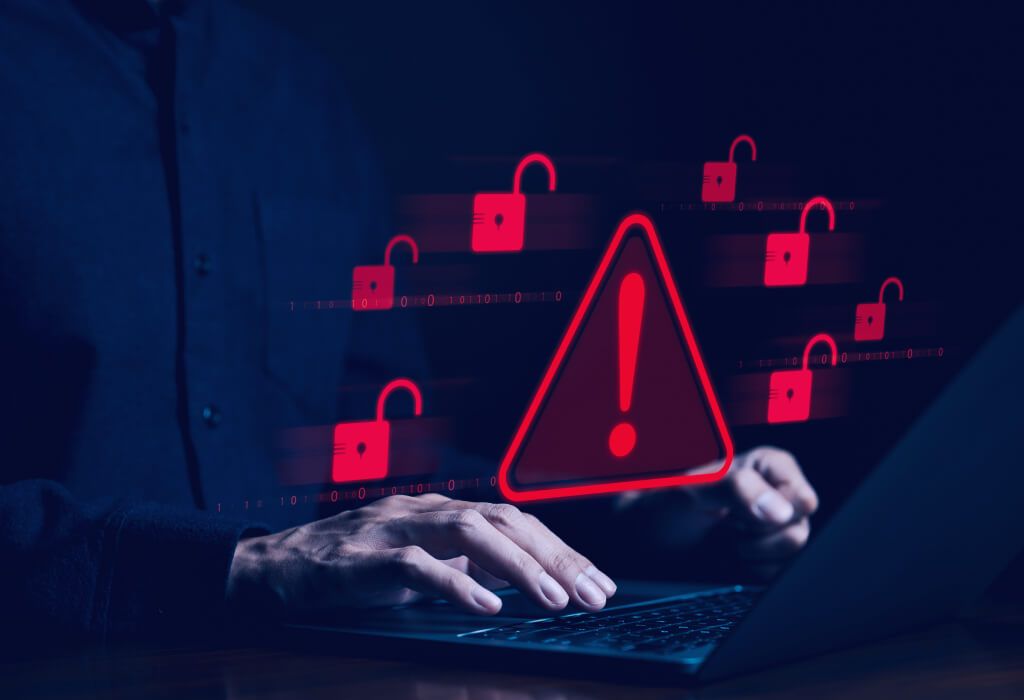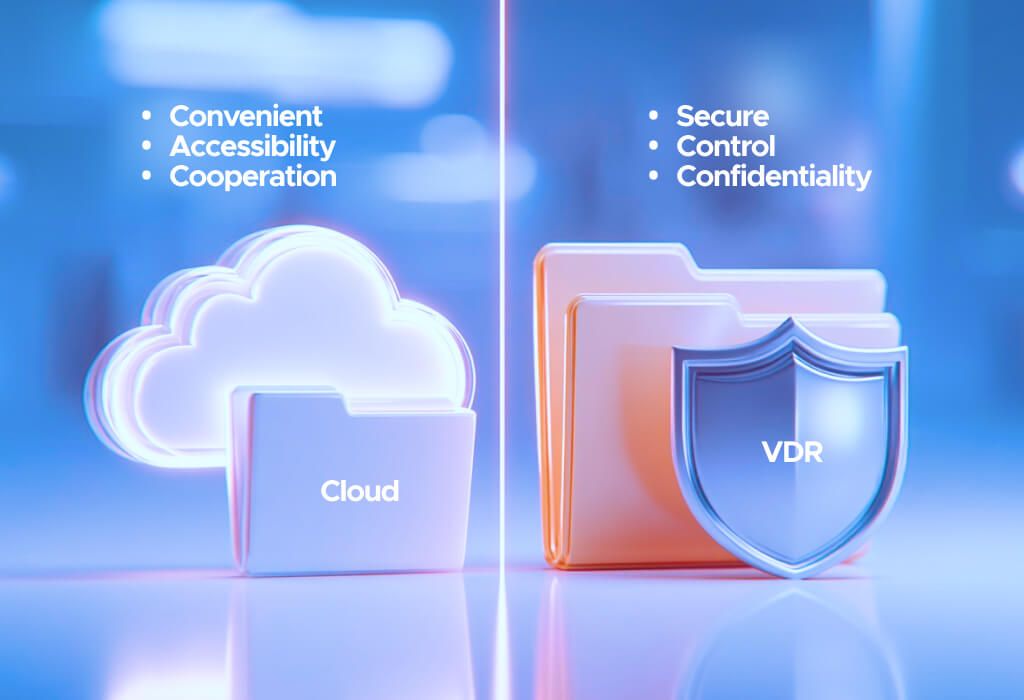Cloud storage and virtual data rooms (VDRs) are pivotal for digital file management, yet they cater to vastly different needs. Both leverage internet-based servers, but their functionality, security, and applications set them apart. Cloud storage prioritizes accessibility and teamwork, while VDRs focus on ironclad security and oversight for sensitive deals. This guide dissects their definitions, strengths, weaknesses, and distinctions to help you select the optimal tool for your personal or professional objectives.
Defining Cloud Storage

Cloud storage is an online solution that allows users to store, manage, and distribute files via internet-based servers. It eliminates the need for physical drives, enabling access from any device with a web connection. Services like Google Drive, Dropbox, OneDrive, and iCloud support various file types, including documents, images, videos, and audio. These platforms offer integrated tools for real-time editing, annotating, and sharing, enhancing productivity for individuals and teams across different locations.
Strengths of Cloud Storage
Cloud storage offers compelling benefits, fueling its widespread use:
Retrieve files from any location with internet access.
Free or low-cost plans fit solo users and small groups.
Real-time co-editing boosts team efficiency.
Flexible storage scales with data growth.
Syncs with tools like Google Sheets, Trello, or Asana.
Auto backups shield against accidental data loss.
Cross-device compatibility ensures seamless access.
These advantages make cloud storage a cornerstone for daily tasks, remote collaboration, and flexible file management.
Weaknesses of Cloud Storage
Cloud storage has limitations, particularly for sensitive information:
Standard security may not satisfy regulatory demands.
Lose control over file sharing and permissions.
Dependent on reliable internet connectivity.
Weak passwords or shared links invite breaches.
Free tiers cap storage or restrict features.
Limited tracking hampers compliance efforts.
While ideal for routine use, cloud storage struggles in scenarios requiring stringent data protection or oversight.
Defining Virtual Data Rooms

A virtual data room (VDR) is a fortified online platform built for storing and sharing confidential documents during critical processes like mergers and acquisitions (M&A), compliance audits, fundraising, or trade secret management. Unlike cloud storage, VDRs are engineered for professional contexts demanding robust security and precise control. Solutions from Boundeal, Firmex, and Ansarada feature tools like encrypted file protection, user-specific permissions, and compliance-ready workflows, ensuring secure collaboration in high-stakes scenarios.
Strengths of VDRs
VDRs provide tailored benefits for sensitive data and intricate processes:
Military-grade encryption and 2FA secure files.
Detailed permissions dictate view or edit rights.
Full audit logs track actions for accountability.
Complies with GDPR, HIPAA, FINRA, and SOC 2.
Q&A tools and versioning streamline complex tasks.
Custom configurations align with project goals.
Leak-proof sharing safeguards sensitive data.
These features make VDRs indispensable for sectors like banking, law, healthcare, and technology, where privacy is paramount.
Weaknesses of VDRs
VDRs are not universally practical due to their specialized nature:
Premium pricing reflects advanced functionality.
Setup may demand technical know-how or training.
Geared for secure tasks, not casual file sharing.
Security layers can slow document access.
Costly for storing bulk, non-critical data.
Limited live editing compared to cloud platforms.
VDRs shine in high-security contexts but are overkill for everyday file management.
Key Distinctions Between Cloud Storage and VDRs

Selecting between cloud storage and a VDR depends on your data’s sensitivity, project scope, and compliance needs. Below are the primary differences:
Purpose and Ease of Use
Cloud storage is designed for straightforward tasks like personal backups, media storage, or team file sharing. Services like OneDrive or iCloud are user-friendly, requiring no setup expertise. VDRs, by contrast, support confidential workflows in M&A, audits, or legal reviews, offering structured environments for secure document control. They require more configuration but deliver precision for sensitive operations.
Security and Regulatory Compliance
Cloud storage provides basic safeguards like encryption and 2FA, but default settings or shared links can expose vulnerabilities. Compliance with strict regulations is often limited. VDRs offer advanced protections, including auto-expiring access, watermarked documents, and adherence to GDPR, HIPAA, or ISO 27001, making them critical for regulated industries handling proprietary data.
Permission Management and Activity Tracking
Cloud platforms offer simple access controls for viewing or editing, but activity monitoring is minimal. Tracking file interactions is often inadequate for compliance. VDRs provide fine-tuned permissions, restricting actions like printing or downloading. Every user action is logged in detailed audit trails, ensuring transparency and regulatory alignment.
Document Management and Workflow Support
Cloud storage supports real-time collaboration, allowing multiple users to edit files concurrently. However, version control and permission granularity are basic. VDRs include sophisticated tools like secure Q&A, document annotations, and version histories optimized for processes like due diligence or investor negotiations, ensuring controlled and efficient workflows.
Choosing the Right Tool: Cloud Storage or VDR
The decision between cloud storage and a VDR hinges on your data’s risk profile, access requirements, and project objectives. Below are tailored scenarios for each:
When to Use Cloud Storage
Cloud storage is optimal for low-stakes tasks, prioritizing accessibility and collaboration. Its affordability and integrations make it versatile. Choose cloud storage for:
Personal storage of photos, notes, or documents.
Teamwork on non-confidential reports or designs.
Freelancers sharing project files with clients.
Small firms managing marketing or operational data.
Remote teams leveraging Google Workspace or Slack.
Quick backups of routine business files.
Sharing large media files with external partners.
Collaborative editing in dynamic work environments.
Cloud storage simplifies workflows when security is not the primary concern.
When to Opt for a VDR
VDRs are indispensable for projects involving sensitive data or regulatory mandates. Their security and control features safeguard critical transactions. Use VDRs for:
Mergers and acquisitions, or due diligence reviews.
Compliance audits with regulatory authorities.
Safeguarding intellectual property or patents.
Fundraising pitches to investors or venture firms.
Board-level contract negotiations or approvals.
Secure data sharing in clinical research trials.
Financial modeling with strategic partners.
Managing sensitive legal case documents.
VDRs ensure data protection and compliance in high-risk, high-value scenarios.
Practical Applications of Cloud Storage
Cloud storage supports diverse industries due to its flexibility and ease:
Education: Professors share course materials via Google Drive.
Advertising: Agencies collaborate on ads using Dropbox.
Creative Arts: Photographers store portfolios on iCloud.
Tech Startups: Use OneDrive for pitch decks and plans.
Charities: Share outreach materials with volunteers.
Retail: Teams manage inventory spreadsheets online.
Its accessibility and low cost make it ideal for non-sensitive, collaborative tasks.
Practical Applications of VDRs
VDRs are vital in sectors where data leaks could be catastrophic:
Banking: Firms conduct M&A due diligence securely.
Law: Attorneys manage client contracts and litigation files.
Pharma: Companies share trial data under HIPAA rules.
Property: Developers secure deeds during transactions.
Energy: Firms handle regulatory filings for permits.
Private Equity: Investors review portfolio company data.
VDRs provide the structure and security needed for regulated, high-stakes processes.
Why is Boundeal VDR a reliable solution?

For organizations managing confidential files, cloud storage often lacks the necessary safeguards. Boundeal VDR is purpose-built for secure collaboration, offering:
Top-Tier Security: End-to-end encryption prevents breaches.
Granular Permissions: Role-specific access and instant revocation ensure control.
Audit Trails: Comprehensive logs meet compliance and transparency needs.
Workflow Tools: Q&A, versioning, and AI insights accelerate processes.
Intuitive Design: Simplifies adoption for all team sizes.
Scalable Plans: Adapts to project budgets and requirements.
24/7 Support: Expert assistance ensures seamless operations.
Once launched, Boundeal VDR will empower teams to collaborate securely, protecting data and optimizing the efficiency of mission-critical workflows. We advise you to be among the first to try our product in practice.
FAQ
Can cloud storage be secure enough for M&A?
Cloud storage lacks the precise controls and compliance needed for M&A. Shared links, and weak audit trails pose risks. VDRs offer robust security and regulatory support.
Are VDRs exclusive to large firms?
No, VDRs benefit any entity handling sensitive data, from startups seeking funding to small legal teams, ensuring protection and compliance.
Is a VDR costly to implement?
VDR pricing varies by features and storage. Though more expensive than cloud storage, Boundeal offers flexible plans for diverse budgets.
Can cloud storage handle sensitive files?
With 2FA and restricted sharing, cloud storage can store sensitive data, but VDRs provide superior control, auditing, and compliance for critical files.
How does collaboration differ in cloud storage vs. VDRs?
Cloud storage enables rapid, real-time editing for teams, while VDRs offer controlled collaboration with strict permissions and logged actions for secure processes.
Which sectors rely on VDRs?
Banking, law, healthcare, and tech use VDRs to meet compliance and protect sensitive data during deals or audits.
When should you switch from cloud storage to a VDR?
Switch to a VDR for legal, financial, or regulated data needing strict access control, detailed audit trails, or compliance with standards like GDPR.






